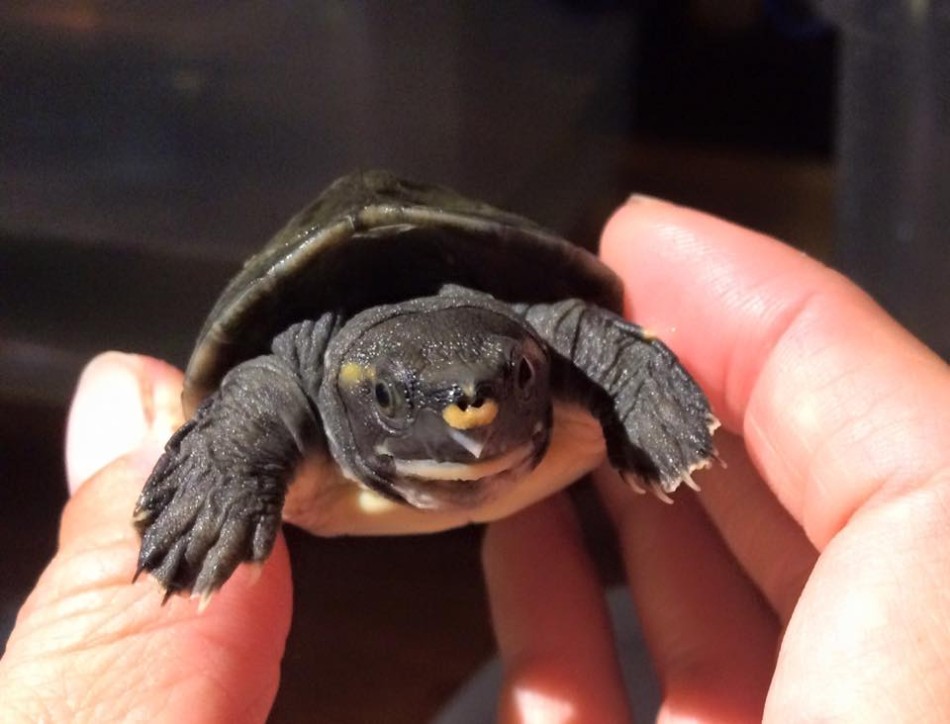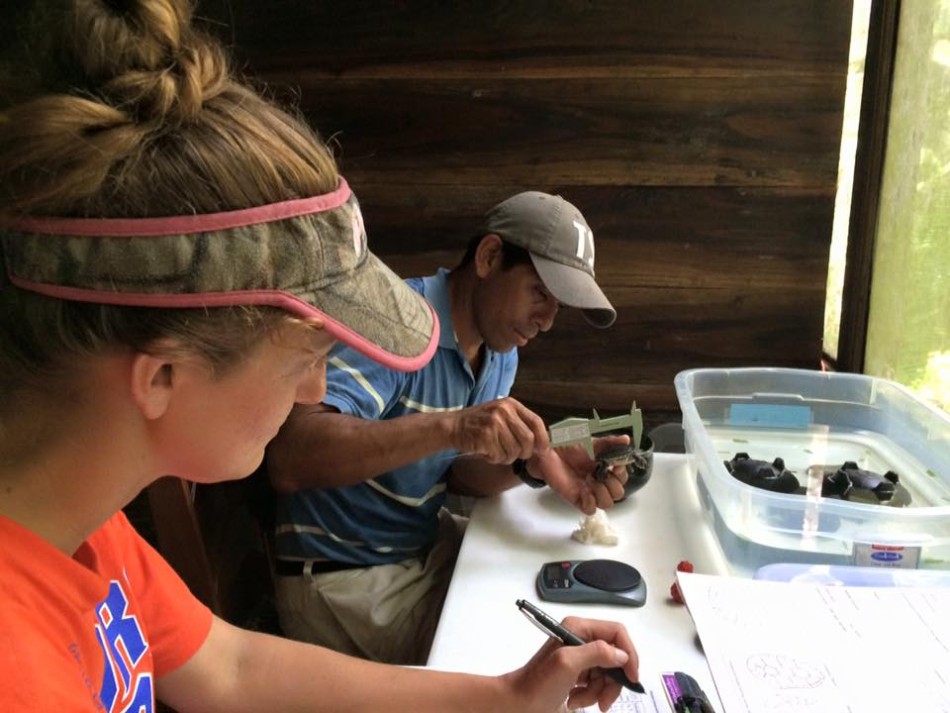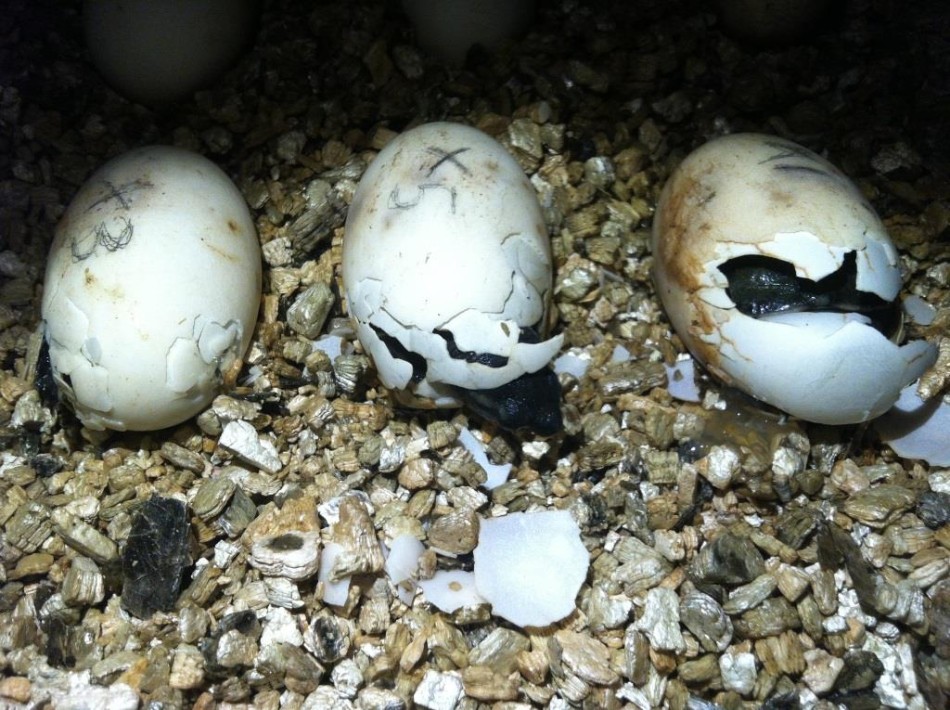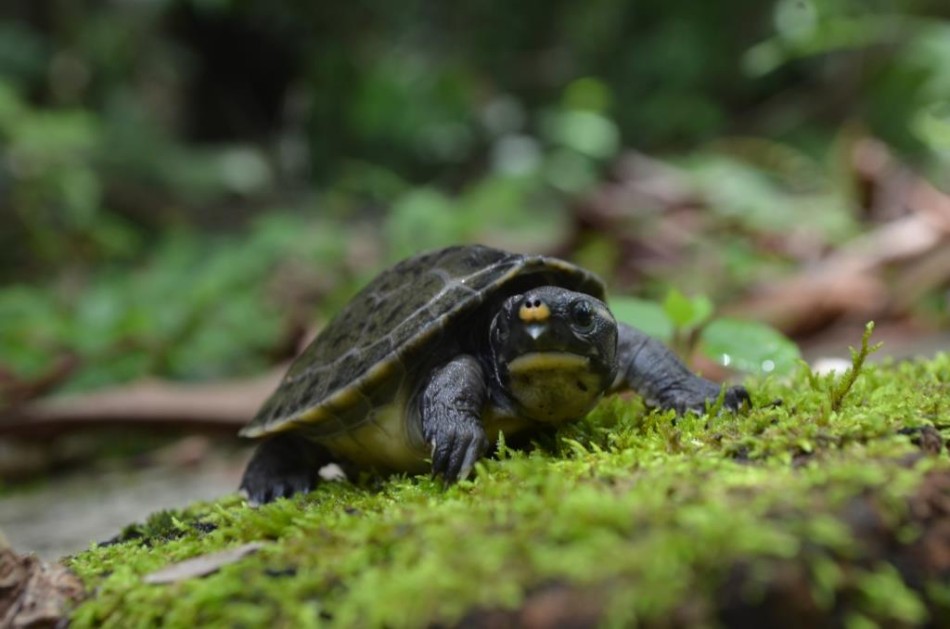First captive bred Hicatee Turtles hatch at HCRC
Six months after a clutch of eight Hicatee eggs was found buried at the waters’ edge at the Hicatee Conservation and Research Center (HCRC) in December of 2014, hatchlings began to emerge from their eggs. These are the first hatchlings in the captive breeding program established by the Turtle Survival Alliance (TSA) and BFREE at the HCRC located at the BFREE Field Station in southern Belize. Locally known as Hicatee, Dermatemys mawii, is the only living representative of a formerly widespread group of turtles in the family Dermatemydidae. D. mawii is classified as Critically Endangered by the IUCN Red List, which identifies it as “the most endangered species, genus, and family of turtles in Mexico and possibly elsewhere in its limited range.” D. mawii’s range extends only from southern Mexico, into northern Guatemala and Belize.
Of the eight eggs deposited in the nest, seven were determined fertile, and of the seven, all hatched. With an incubation period of over six months, this is an unusually long period for most turtle eggs. This is partially due to the delayed development that occurs during the initial stages of incubation, called embryonic diapause, a term that describes a period of time when virtually no development of the embryo takes place. With Hicatee, this evolutionary trait likely occurs because Hicatee deposit their eggs at the rivers’ edge during the rainy season when water levels fluctuate greatly, and nests are often partially or completely submerged from days to weeks at a time, and temperatures are cooler. These environmental factors, as well as others, are being studied at the HCRC.

Dermatemys mawii is classified as Critically Endangered by the IUCN Red List – pic by Nichole Bishop
Jacob Marlin of BFREE is thrilled about the new additions to the HCRC.
“There are so many questions and opportunities for discovery concerning the biology and reproductive ecology of this rare and little known species. I feel honored and excited for BFREE to play such an important role in the long term conservation of Hicatee turtles.”
Starting on June 14th, the seven hatchlings were all born within 5 days of each other. After first breaking through the egg shell, called “pipping”, the baby turtles tended to wait to fully emerge from the shell for an average of two days. Hatchlings were then carefully weighed, measured, and permanently marked for identification. Each was set up individually in small containers so they could be closely monitored. The hatchlings’ average weight was about 35 grams – large for a freshwater turtle. They all began to feed almost immediately and showed no signs of any health problems or abnormalities.
Nearly three weeks old, the hatchlings are adapting well to their new world. They have been moved into larger enclosures, approximately 36”L X 18”W X 8”H, and are living in two groups – four in one container and three another. These herbivores receive daily feedings of Paspalum paniculatum, which is a native grass of Belize and the preferred food for Hicatee. In addition to p-grass, both groups are also feeding readily on a variety of leaves including fig, banana, sweet potato, Cecropia, and Cocoyam.Fruits have been offered including papaya and mango, though the hatchlings have not seemed particularly interested. Some meat items have been introduced such as fish, but have not been taken by the turtles.
One of the groups was offered feces from the adults in order to inoculate them with the appropriate gut microflora. The presence of gut microflora likely plays an important role in the ability of the turtles to break down plant matter and absorb critical nutrients from their diet. The second group will wait to be inoculated for one month after hatching, in order to compare growth rates between the two groups. Feces of both groups are being collected twice per week, and will be analyzed for gut microflora by Nichole Bishop, a PhD student at the University of Florida, who is focusing her studies on the ecology of gut microflora and the role it plays in the growth rates of Hicatee.

UF grad student, Nichole Bishop, and HCRC Manager, Tom Pop, collect weight and measurement data on the one-week old turtles – pic by Mark Mummaw
The turtles are being observed daily, and are feeding both day and night, though they seem to be more active foragers during nighttime hours. Weight and other measurements are taken on a weekly basis and their two-week checkup showed considerable growth. Some individuals gained as much as 27% in weight!
We anticipate watching them grow and thrive in coming months and as rainy season is upon us – we look forward to more eggs followed by more hatchlings in 2016!



Leave a Reply
Want to join the discussion?Feel free to contribute!